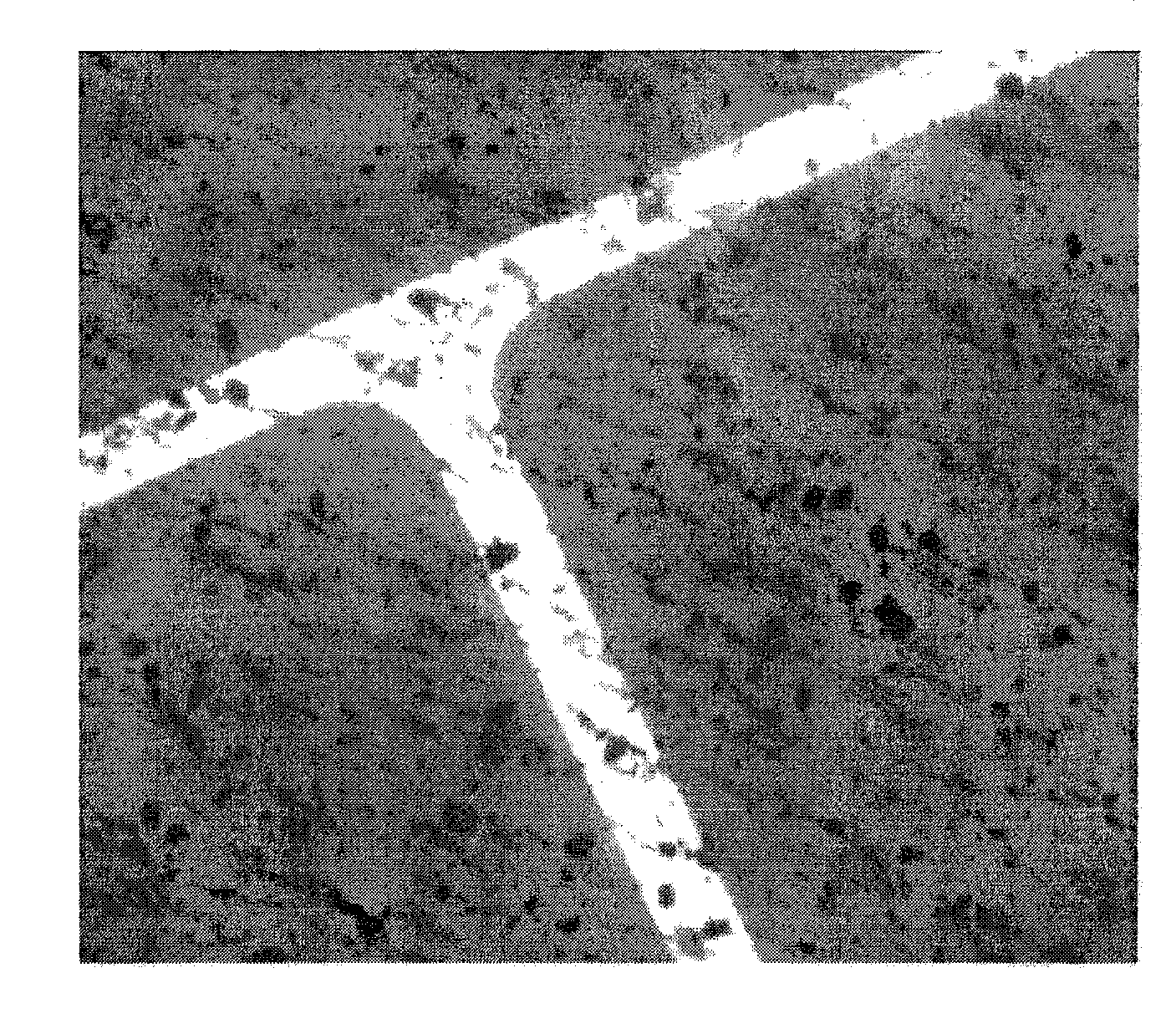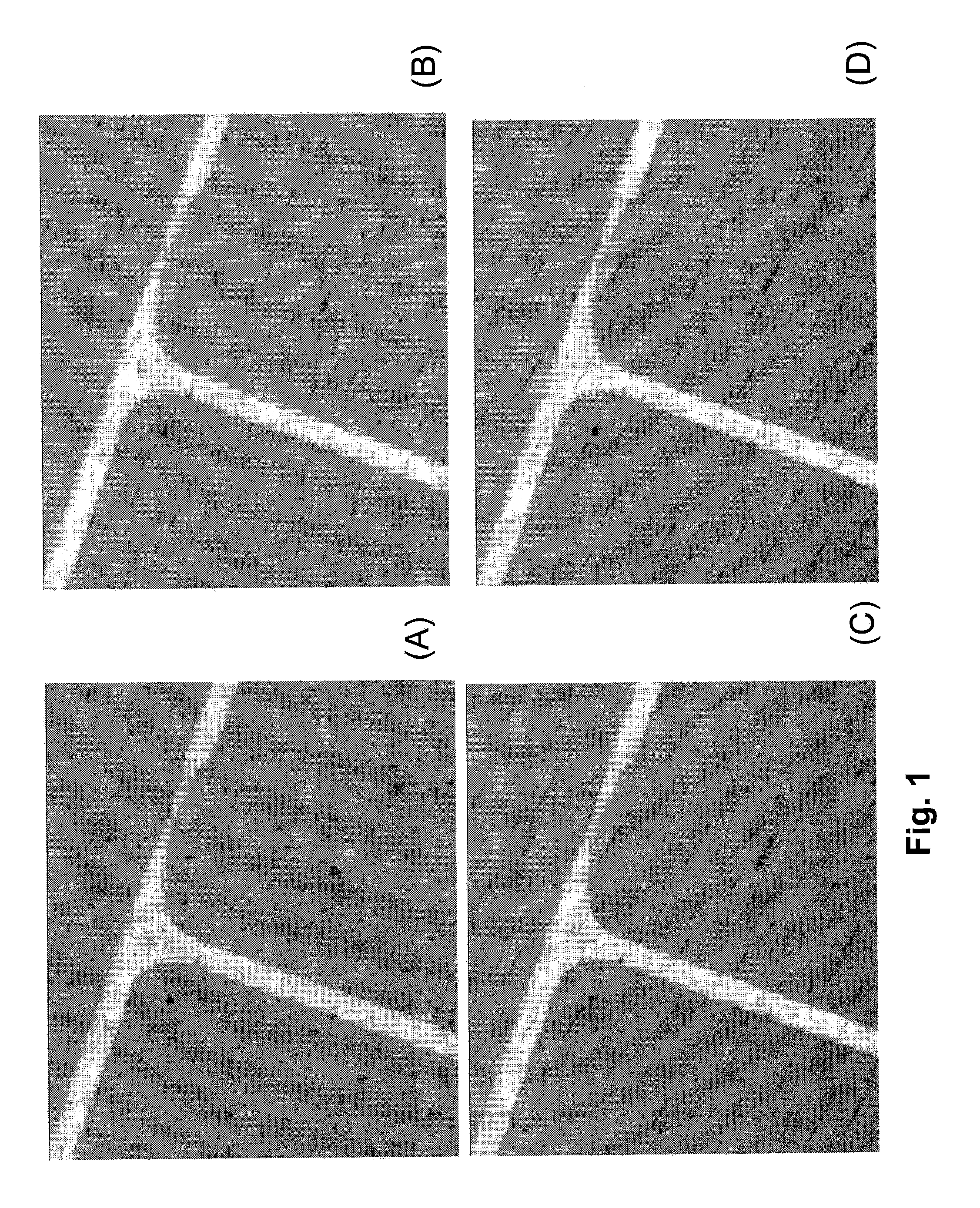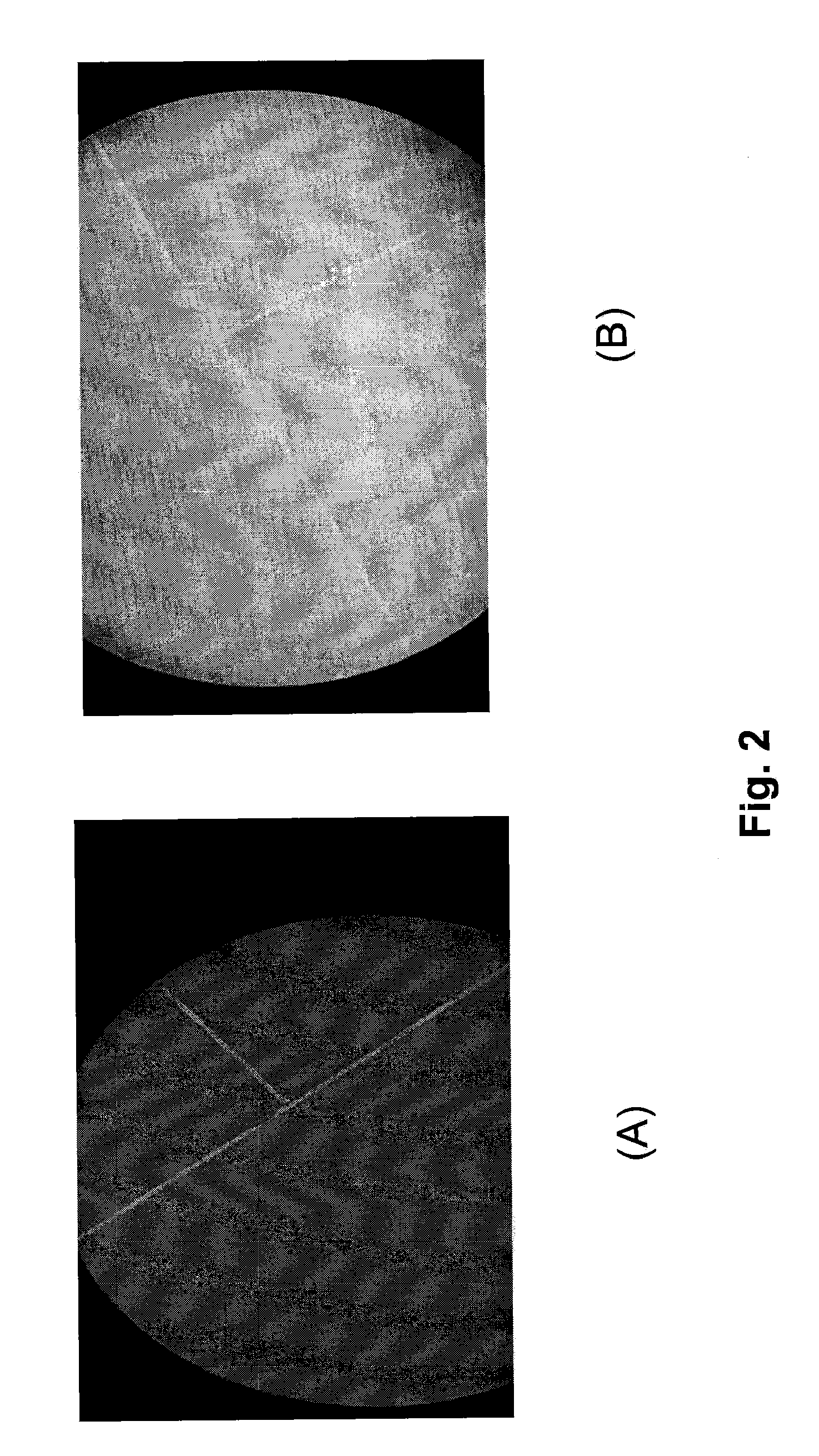Alignment of Carbon Nanotubes Comprising Magnetically Sensitive Metal Oxides in Nanofluids
a technology of carbon nanotubes and metal oxides, which is applied in the direction of magnetic liquids, magnetic materials, magnetic bodies, etc., can solve the problems of inherently low thermal conductivities, hampered the development of energy-efficient heat transfer fluids, and limitations of nanofluids, so as to increase the conductivity of nanofluids, increase the viscosity, and increase the effect of conductivity
- Summary
- Abstract
- Description
- Claims
- Application Information
AI Technical Summary
Benefits of technology
Problems solved by technology
Method used
Image
Examples
experiment 1
Microscopy Showing Nanoparticle Alignment
[0145]Microscope images of 0.017 wt % SWNT, 0.017 wt % Fe2O3 and 0.17 wt % NaDDBS in DI water were obtained using the high speed microscope video system—A: 0 min; B: 0.5 min; C: 1 min; D: 2 min are shown in FIG. 1. A magnetic field (H=0.62 kG) was applied with an internal reference of 30 μm. As shown in FIG. 1A, it is clearly apparent that at zero min the carbon nanotube, metal oxide Fe2O3 and surfactant NaDDBS mixtures are randomly dispersed in the water. As is the case for pristine nanotubes, these mixtures are also entangled and look like scattered dots (most of these dots are much less than 30 μm in diameter) in the microscope image. With the addition of the external magnetic field, the “scattered dots” start to stretch, vibrate and align, as shown in FIG. 1B, as quickly as 30 seconds after the application of the magnetic field. As time progresses, FIG. 1C—approximately 1 min after the application of the magnetic field, the aligned nanopa...
experiment 2
Effect of Time of Exposure of Magnetic Field on Thermal Conductivity
[0150]In the presence of the magnetic field, the thermal conductivity of the nanofluids demonstrates a very interesting behavior. The thermal conductivity initially increases with time, but eventually reaches a peak value of 0.95 W / m·K after exposure to a magnetic field for between two to four minutes, indicating the impact of the nanotube alignment process. Microscopy videos illustrate the time dependent stretching and orientation process of the nanotubes. As the time of exposure to the magnetic field increases, the thermal conductivity decreases. This is thought to be due to the excessive agglomeration of the nanoparticles, creating larger particles that begin to precipitate or settle in the fluid. This last point was confirmed by microscopic examination. In addition, the video images provide an explanation for the impact of longer residence times in the magnetic field, where the thermal conductivity value decreas...
experiment 3
Solvent Effect on Alignment
[0154]The macrogeometrical effect of magnetically aligned 0.017 wt % SWNT, 0.017 wt % Fe2O3 and 0.17 wt % NaDDBS in DI water was evaluated using digital camera images as shown in FIG. 4. It is clearly apparent that the black particles form lines along the magnetic field on the bottom of vessel. While the trend of this alignment is the same, solvents with higher dipole moments demonstrate a more rapid alignment. FIG. 5 illustrates the optical microscope images for 0.017 wt % SWNT, 0.017 wt % Fe2O3 and 0.17 wt % NaDDBS in different solvents: (a) Hexane, (b) Water, and (c) DMF. The scale shown is 100 μm. It is well known that dipole moments for Hexane, water, and DMF are 0, 1.85, and 3.82, respectively. Therefore, the alignment trends are different.
PUM
| Property | Measurement | Unit |
|---|---|---|
| angle | aaaaa | aaaaa |
| angle | aaaaa | aaaaa |
| diameter | aaaaa | aaaaa |
Abstract
Description
Claims
Application Information
 Login to View More
Login to View More - R&D
- Intellectual Property
- Life Sciences
- Materials
- Tech Scout
- Unparalleled Data Quality
- Higher Quality Content
- 60% Fewer Hallucinations
Browse by: Latest US Patents, China's latest patents, Technical Efficacy Thesaurus, Application Domain, Technology Topic, Popular Technical Reports.
© 2025 PatSnap. All rights reserved.Legal|Privacy policy|Modern Slavery Act Transparency Statement|Sitemap|About US| Contact US: help@patsnap.com



